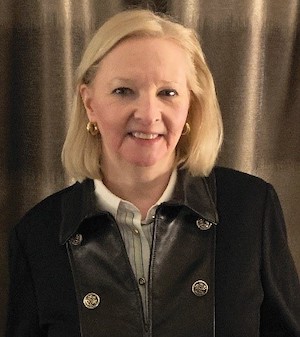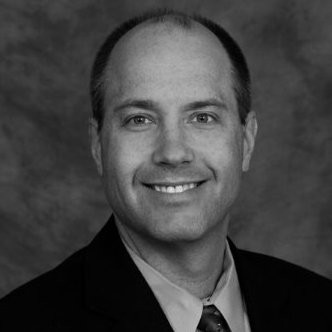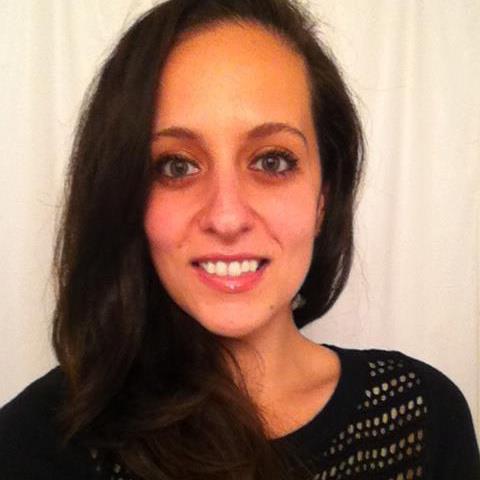clinical data
See the following -
How to Prepare for the API Requirements of the Cures Act
 As of April 5, 2021, the U.S. ONC Cures Act Final Rule Compliance Timeframe is in effect. Healthcare providers, Health IT developers, Health Information Exchanges (HIEs), and Health Information Networks (HINs) will have until October 6, 2022, to provide patients with access to all their Electronic Health Information (EHI). There are several requirements that providers, developers, and exchanges must adhere to. Among them are Conditions and Maintenance of Certification requirements for Information Blocking, Communications, and Application Programming Interfaces (APIs). To help you navigate this compliance timeframe, we've asked our J P System's HL7 FHIR® expert, Jay Lyle, what does one need to know about APIs and data standards. Jay has been co-chair of the HL7 Patient Care Work Group for 8 years and is an expert in HL7 data standards development and APIs.
As of April 5, 2021, the U.S. ONC Cures Act Final Rule Compliance Timeframe is in effect. Healthcare providers, Health IT developers, Health Information Exchanges (HIEs), and Health Information Networks (HINs) will have until October 6, 2022, to provide patients with access to all their Electronic Health Information (EHI). There are several requirements that providers, developers, and exchanges must adhere to. Among them are Conditions and Maintenance of Certification requirements for Information Blocking, Communications, and Application Programming Interfaces (APIs). To help you navigate this compliance timeframe, we've asked our J P System's HL7 FHIR® expert, Jay Lyle, what does one need to know about APIs and data standards. Jay has been co-chair of the HL7 Patient Care Work Group for 8 years and is an expert in HL7 data standards development and APIs.
- Login to post comments
Johnson & Johnson Announces Clinical Trial Data Sharing Agreement With Yale School of Medicine
Johnson & Johnson today announced that its subsidiary, Janssen Research and Development, LLC, has entered into a novel agreement with Yale School of Medicine's Open Data Access (YODA) Project that will extend its commitment to sharing clinical trials data to enhance public health and advance science and medicine.
- Login to post comments
Keeping Everyone in the Know: New CMS ADT Rule
 On March 9, 2020, the Centers for Medicare & Medicaid Services (CMS) issued the Interoperability and Patient Access Final Rule aimed at enhancing interoperability and increasing patient access to health information. This Final Rule contains a new Condition of Participation (CoP) that requires all hospitals, psychiatric hospitals, and Critical Access Hospitals to electronically share (via an electronic health record [EHR] or another electronic administrative system) event notifications (also referred as e-notifications) with other providers across the continuum of care. These event notifications should occur whenever patients have an emergency department (ED) or inpatient admission, discharges, or transfers (also known as ADTs) in community hospitals.
On March 9, 2020, the Centers for Medicare & Medicaid Services (CMS) issued the Interoperability and Patient Access Final Rule aimed at enhancing interoperability and increasing patient access to health information. This Final Rule contains a new Condition of Participation (CoP) that requires all hospitals, psychiatric hospitals, and Critical Access Hospitals to electronically share (via an electronic health record [EHR] or another electronic administrative system) event notifications (also referred as e-notifications) with other providers across the continuum of care. These event notifications should occur whenever patients have an emergency department (ED) or inpatient admission, discharges, or transfers (also known as ADTs) in community hospitals.
- Login to post comments
Navigation Between Heavy-weight and Light-weight Standardization (Part 2)

The previous section of this article laid out the context for HL7 FHIR standard and the Argonaut project; now we can look at the current status.Tripathi portrays the Argonaut process as radically different from HL7 norms. HL7 hasestablished its leading role in health standards by following the rules of the American National Standards Institute (ANSI) in the US, and similar bodies set up in other countries where HL7 operates. These come from the pre-Internet era and emphasize ponderous, procedure-laden formalities. Meetings must be held, drafts circulated, comments explicitly reconciled, ballots taken. Historically this has ensured that large industries play fair and hear through all objections, but the process is slow and frustrates smaller actors who may have good ideas but lack the resources to participate.
- Login to post comments
Neuron Health: Building Clinical Applications On An Open Source Platform
Here are four reasons building on the Tolven Platform can benefit healthcare application development, along with lessons learned through the experiences of Roberts-Hoffman Software. Our team created the clinical functions of an inpatient EHR, many of which are available as open source plugins to Tolven under the Neuron Health project.
- Login to post comments
New, Open Access Journal Turns Peer-Review Lens Toward Improving The Research Process
AcademyHealth today announced the official launch of eGEMs, a free, peer-reviewed e-publication that will publish innovative ideas and practices using electronic clinical data to advance health systems research and quality improvement, and improve patient and community outcomes. Read More »
- Login to post comments
NIH to Bring Precision Medicine Data Collection to Patient Homes
Thousands of volunteers for the All of Us precision medicine cohort won’t even have to leave the comfort of their living rooms when contributing data to the project thanks to a new NIH collaboration with mobile medical service EMSI. The All of Us program, formally known as the Precision Medicine Initiative (PMI) Cohort, aims to collect biosamples from at least one million patients to fuel big data analytics and personalized medicine research...
- Login to post comments
ONC's Trusted Exchange—A Public Health Perspective
 In January 2018 the Office of the National Coordinator for Health Information Technology (ONC) issued a draft Trusted Exchange Framework and Common Agreement (TEFCA), and related supporting documents, in response to a requirement imposed by Congress in the 21st Century Cures Act. The Act says that the TEF may include a common method for authenticating users, a common set of rules, enabling policies, and a process for managing non-compliance. Nowhere does the Act instruct ONC to determine an actual technical architecture in this process, though such a step is not precluded either. The primary document is in two parts: Part 1 is a set of principles that set the foundation for Part 2 which is a set if minimum terms and conditions for trusted exchange.
In January 2018 the Office of the National Coordinator for Health Information Technology (ONC) issued a draft Trusted Exchange Framework and Common Agreement (TEFCA), and related supporting documents, in response to a requirement imposed by Congress in the 21st Century Cures Act. The Act says that the TEF may include a common method for authenticating users, a common set of rules, enabling policies, and a process for managing non-compliance. Nowhere does the Act instruct ONC to determine an actual technical architecture in this process, though such a step is not precluded either. The primary document is in two parts: Part 1 is a set of principles that set the foundation for Part 2 which is a set if minimum terms and conditions for trusted exchange.
- Login to post comments
Open Source Machine Learning Tools are as Good as Humans' in Cancer Surveillance According to Regenstrief, Indiana Univ. Study
 Machine learning has come of age in public health reporting according to researchers from the Regenstrief Institute and Indiana University School of Informatics and Computing at Indiana University-Purdue University Indianapolis. They have found that existing algorithms and open source machine learning tools were as good as, or better than, human reviewers in detecting cancer cases using data from free-text pathology reports. The computerized approach was also faster and less resource intensive in comparison to human counterparts.
Machine learning has come of age in public health reporting according to researchers from the Regenstrief Institute and Indiana University School of Informatics and Computing at Indiana University-Purdue University Indianapolis. They have found that existing algorithms and open source machine learning tools were as good as, or better than, human reviewers in detecting cancer cases using data from free-text pathology reports. The computerized approach was also faster and less resource intensive in comparison to human counterparts.
- Login to post comments
Pharma Not So Big On Cloud For Clinical Trials
Big pharma is notoriously slow-footed when it comes to changing its business model. Some would argue it is a major reason why so many pharmaceutical companies are struggling as their blockbuster drugs go off patent. In short, there is an institutionalized caution to embracing the kind of change moving to the cloud presents.
- Login to post comments
Philips and MIT Investigators Collaborate to Give Researchers Unprecedented Access to Critical Care Patient Data
 Royal Philips today announced a new initiative with Massachusetts Institute of Technology (MIT) to allow health care researchers to tap into one of the largest data sources available for research into critical care. Philips will be granting access to data from more than 100,000 patients that have been collected and anonymized through the Philips Hospital to Home eICU telehealth program. The Laboratory of Computational Physiology within the MIT Institute for Medical Engineering and Science will serve as the academic research hub for the initiative, and will provide and maintain access, as well as help educate researchers on the database and offer a platform for collaboration...
Royal Philips today announced a new initiative with Massachusetts Institute of Technology (MIT) to allow health care researchers to tap into one of the largest data sources available for research into critical care. Philips will be granting access to data from more than 100,000 patients that have been collected and anonymized through the Philips Hospital to Home eICU telehealth program. The Laboratory of Computational Physiology within the MIT Institute for Medical Engineering and Science will serve as the academic research hub for the initiative, and will provide and maintain access, as well as help educate researchers on the database and offer a platform for collaboration...
- Login to post comments
Q&A: Unstructured Clinical Notes Just As Valuable For Analytics
While much has been made of the need to standardize clinical data with EHRs that use templates, click boxes, and dropdowns to funnel information into pre-determined data elements, the need for such strict organization may not be top priority for long. [...] Read More »
- Login to post comments
Samuel Shem Calls for Using VistA and the VA Model of Care to Solve the Physician Burnout Crisis
 On November 1st Newsweek published an extraordinary Op-Ed by Samuel Shem titled Why Computerized Medical Records Are Bad for Both You and Your Doctor. In the article, Shem, pen name for the American psychiatrist and well-known author Stephen Joseph Bergman, presents evidence that poorly designed electronic medical records (EMRs) and over-regulation are to blame for the growing crisis of physician burnout and suicide. The rate of suicides among physicians has risen to a staggering number--three per day. Shem argues that there is a "better way," and that is shown by the electronic health record (EHR) system used by the U.S. Department of Veterans Affairs (VA). The VA's EHR is called VistA. Shem's view is supported by a large and increasing number of physicians and nurses. Read More »
On November 1st Newsweek published an extraordinary Op-Ed by Samuel Shem titled Why Computerized Medical Records Are Bad for Both You and Your Doctor. In the article, Shem, pen name for the American psychiatrist and well-known author Stephen Joseph Bergman, presents evidence that poorly designed electronic medical records (EMRs) and over-regulation are to blame for the growing crisis of physician burnout and suicide. The rate of suicides among physicians has risen to a staggering number--three per day. Shem argues that there is a "better way," and that is shown by the electronic health record (EHR) system used by the U.S. Department of Veterans Affairs (VA). The VA's EHR is called VistA. Shem's view is supported by a large and increasing number of physicians and nurses. Read More »
- The Future Is Open
- Login to post comments
Syapse Joins Free The Data! Initiative and Provides Software To Power Participant-centric Hereditary Gene Mutation Data
Syapse, the leader in software for bringing omics into routine medical use, announced that it has joined the Free the Data! initiative. [...] Read More »
- Login to post comments
The Growing Trend Of Clinical Research Crowdsourcing
 The trend of open collaboration has led to innovation across multiple industries. For decades, big pharma has been known as conservative and slow to change. Today however, there is a growing movement toward open access and crowdsourcing scientific information to accelerate research and development. Open-source platforms have let developers create multiple crowdsourcing applications, that are further enabling the crowdsourcing trend in the life sciences industry, as well.
The trend of open collaboration has led to innovation across multiple industries. For decades, big pharma has been known as conservative and slow to change. Today however, there is a growing movement toward open access and crowdsourcing scientific information to accelerate research and development. Open-source platforms have let developers create multiple crowdsourcing applications, that are further enabling the crowdsourcing trend in the life sciences industry, as well.
- Login to post comments